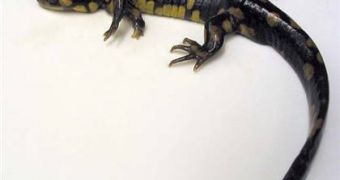For the past few years, biologists believed that the increasing number of mutations they observed in salamanders and frogs was a direct result of inbreeding, caused by the reduction of the natural habitats of the amphibians. However, recent scientific data seem to suggest that this is not the case, and that man-made pollution and other industrial activities are to blame for five-legged salamanders and frogs with less or more limbs than normal.
[ADMARk=1]The survey was published in the Biology Letters journal, by a team of scientists at the Purdue University, led by Rod Williams, an assistant professor of Forestry and Natural Resources and his former doctoral adviser, Andrew DeWoody, who is also the main author of the current paper.
Williams believes that tiny parasites are responsible for the 8 percent mutation rates he and his team encountered in over 2,000 salamander models they've studied. Tiger salamanders get infected with these small parasites that live and multiply rapidly on nutrient-rich runoffs from large agricultural farms in the Northern part of the United States.
An important reason why this happens is because salamanders return to the same pond throughout their lives, during the mating season. This led biologists to believe that inbreeding was responsible for the abnormalities at first. Inbreeding can cause rapid deteriorations in both animal and human genomes, and can "strip" vital information from DNA strands.
Having put that assumption behind, researchers are now trying to determine the exact extent to which amphibian populations worldwide are being affected by pollution and climate change. Global warming has been known to severely reduce frog populations throughout the globe, by drying the ponds they live in and exposing their eggs to sunlight, which kills them.

 14 DAY TRIAL //
14 DAY TRIAL //